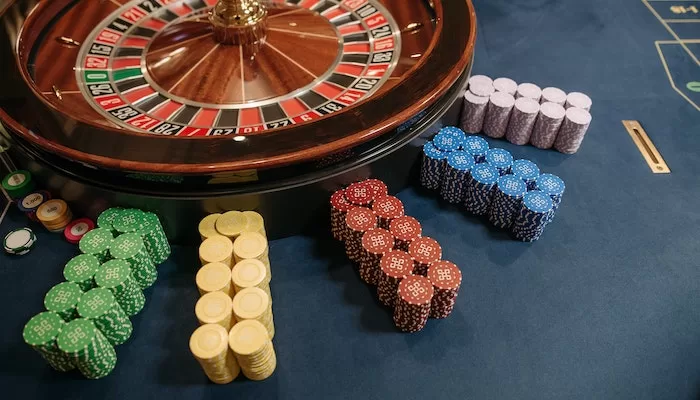Casino chips are not just cash substitutes. They are part of the psychology and dynamics of gambling. Their feel, bright colors, and lack of association with real money erase the emotional pain of losing or winning. Players tend to bet more cash when they push plastic chips instead of shuffling bills. But for casinos, chips aren’t just for the customer experience. They are precision-engineered tools that must be virtually impossible to counterfeit and easy to track.
Precision Engineering: How Casino Chips Came to Become a Thing
The existence of casino tokens begins far from the gaming table. These products are specially produced by seasoned manufacturers in highly secure facilities using specially designed equipment and proprietary materials. The token base is typically made from a mix of clay, ceramic, or high-density plastic, chosen for its resilience and unique feel. Each casino typically maintains its unique blend or recipe to ensure uniqueness.
Once the base is ready, the design begins. Casinos hire artwork that includes logos, intricate designs, and color codes for the various units. Others insert tiny dots or invisible ink impressions to give the banknotes a more natural look. To prevent counterfeiting, manufacturers utilize techniques such as high-pressure molding and laser etching to insert designs deep into the material, not just on the surface.
Edge speckles are also present on high-value chips. That is, colored lines along the edge of the chip. They are not just decorative. They are specifically designed to allow casino staff and security cameras to instantly recognize the denomination, even from a distance or in poorly lit areas.
Integrated Defense: Layers of Protection
Similarly, while paper banknotes include watermarks and security fibers, casino chips are equipped with anti-counterfeiting technology. This now includes RFID (radio frequency identification) technology, which is used to track the location of chips on the table in real time. Microchips embedded inside can be scanned by readers on the table or in the cash dispenser to identify and track their movements.
Casinos also continually change token designs or issue limited series chips to further prevent fraud. Whenever a set of tokens is found to be damaged or illicitly distributed, they can be destroyed or replaced.
They often contain UV-reactive ink, serial numbers, or barcodes that are invisible to the naked eye but can be detected by equipment. Security personnel and trained field managers can identify differences in texture, color, or design that could be indicators of counterfeiting.
Watching Every Step: From Table to Treasury
Once chips are in circulation on the gaming floor, tracking them becomes a top priority. In high-stakes games where millions of dollars can be traded in a single evening, casinos use both human surveillance and advanced technology.
Gameplay is monitored by surveillance staff via camera systems, but increasingly, smart tables are taking center stage. These smart tables incorporate sensors that can detect and track the value and location of chips in real time. This can be used to identify anomalies such as chip dumping, where players intentionally pass chips to other players to evade reporting criteria or money laundering.”
If a cash cage contains an RFID-tagged chip, its authenticity and value are verified before it is redeemed for cash. The casino’s main database is automatically updated with information on how many tokens have been issued, how many tokens have been redeemed, and how many are missing or due for inspection.
The End of the Line: When Chips are Retired
No chip is immortal. When a casino changes its image, security protocols, or wants to update its design, it will retire the old tokens. This process involves collecting and destroying old or worn-out chips so they don’t come back into circulation. Sometimes casinos offer customers a grace period to exchange their old tokens for new ones. Sometimes chips expire after a set date.
Retired tokens are usually destroyed by shredding or crushing, following strict procedures. It’s rare for retired chips with design or historical significance to become collector’s items, sold at auction, or displayed in museums and private collections.
More than Just a Plastic Disc
What looks like a lump of plastic is a combination of design, engineering, psychology, and security. Casino tokens are made to not only withstand the punishment of the casino scene but also maintain the integrity of the entire gambling system. They are manufactured in secret, and their journey is monitored at every step to prevent fraud, ensure fairness, and ensure compliance.
After all, the humble casino chip is a silent mover trusted to act as a cash agent, balance risk, and manage the flow in one of the most risky and highly scrutinized industries on the planet.
Disclaimer: Gambling involves financial risk and can be addictive. Participate responsibly and only if you are of legal age.














